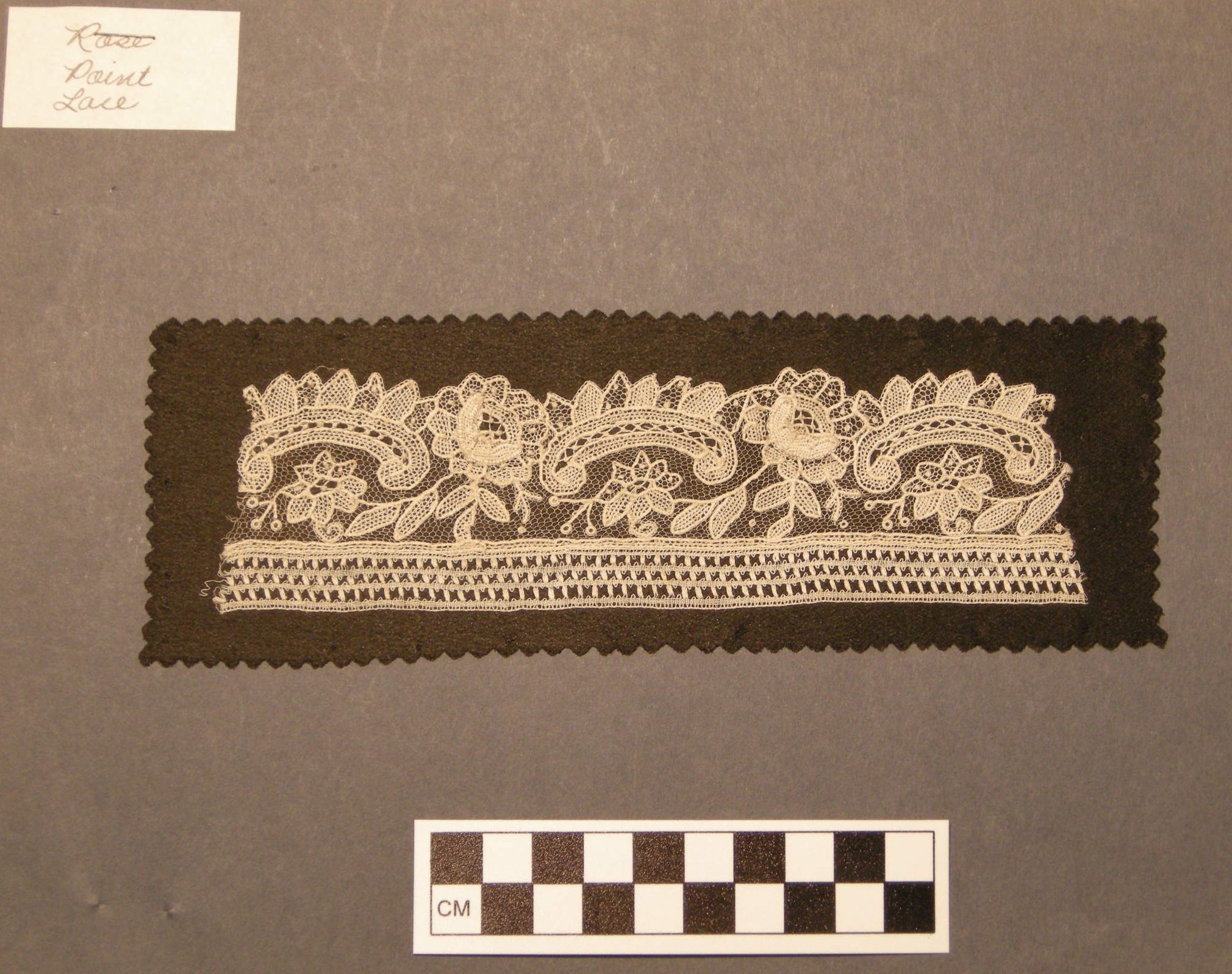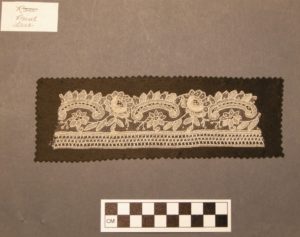Rose point lace fragment, Belgium, c. early 20th century, linen thread, gift of L. B. Audigier,1934.1.348.4.
Perhaps one of the most outrageous objects to be outlawed in history was Belgian lace. The English Parliament outlawed it in 1662 in an attempt to stop the massive flow of money being spent on foreign, rather than domestic, textiles. Although it may seem strange to the modern onlooker perhaps England had good reason to embargo this lace. Even the smallest scrape of lace was ludicrously expensive and this high price derived from how labor intensive lace was. A women lace worker, this was one of the few jobs a woman could obtain in the sixteenth through eighteenth centuries, could only produce one inch of lace in about two hours of nonstop embroidering. Nunneries were common places for lace production as well, and many still produce hand crafted lace to this day. During the French Revolution, owning lace was a dangerous thing. Wearing lace was a very public show of wealth and probably nobility and many nobles were executed for its possession alone. Lace began to fall out of style with the arrival of industry which crushed the expensive hand-produced lace. However, lace was revitalized to serve a different fashion statement other than a status symbol. Queen Victoria wore a beautiful lace wedding dress in 1840. Lace quickly became a must have for wedding dresses, especially for veils and trains.

